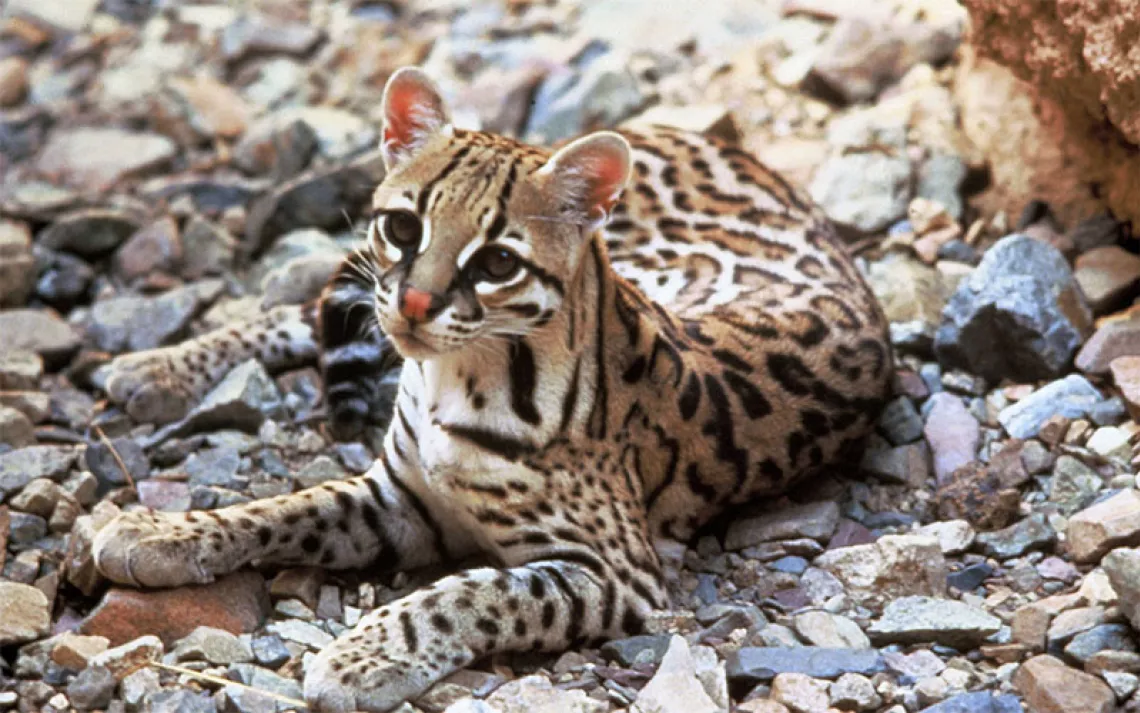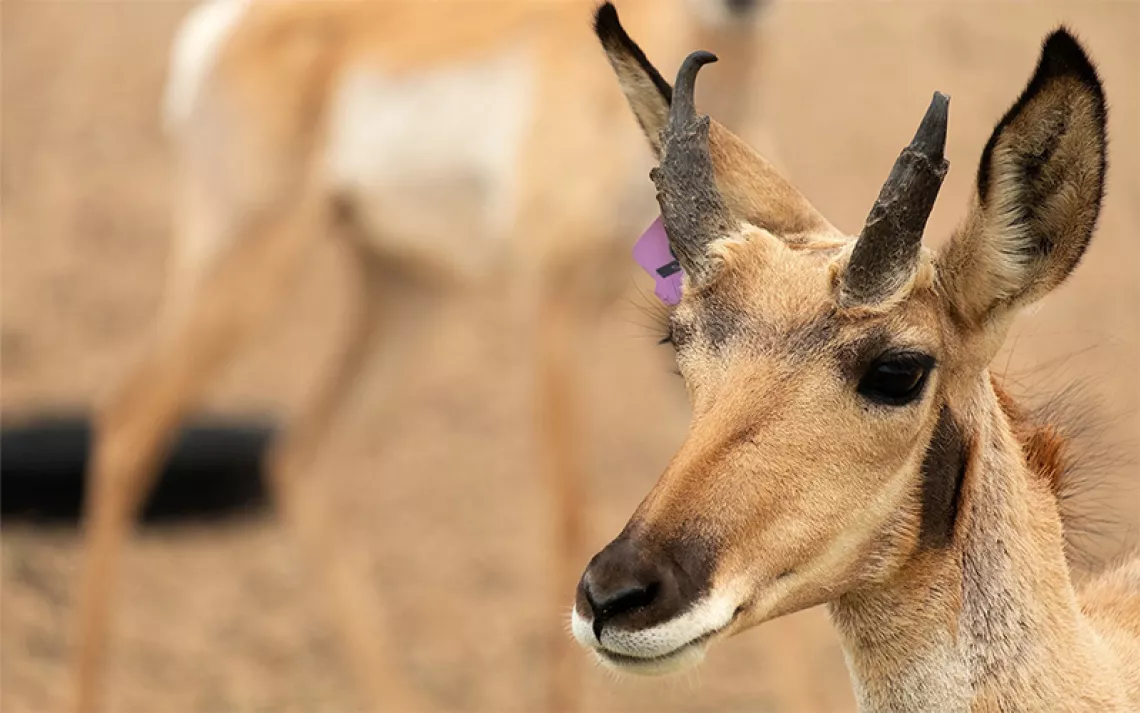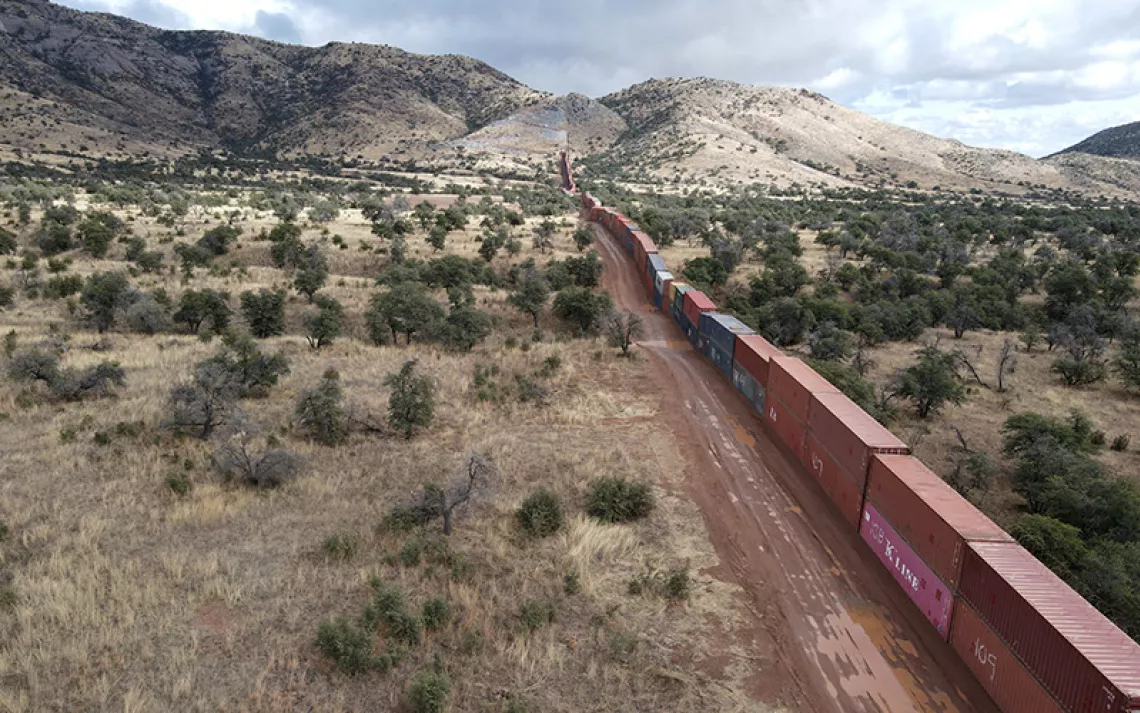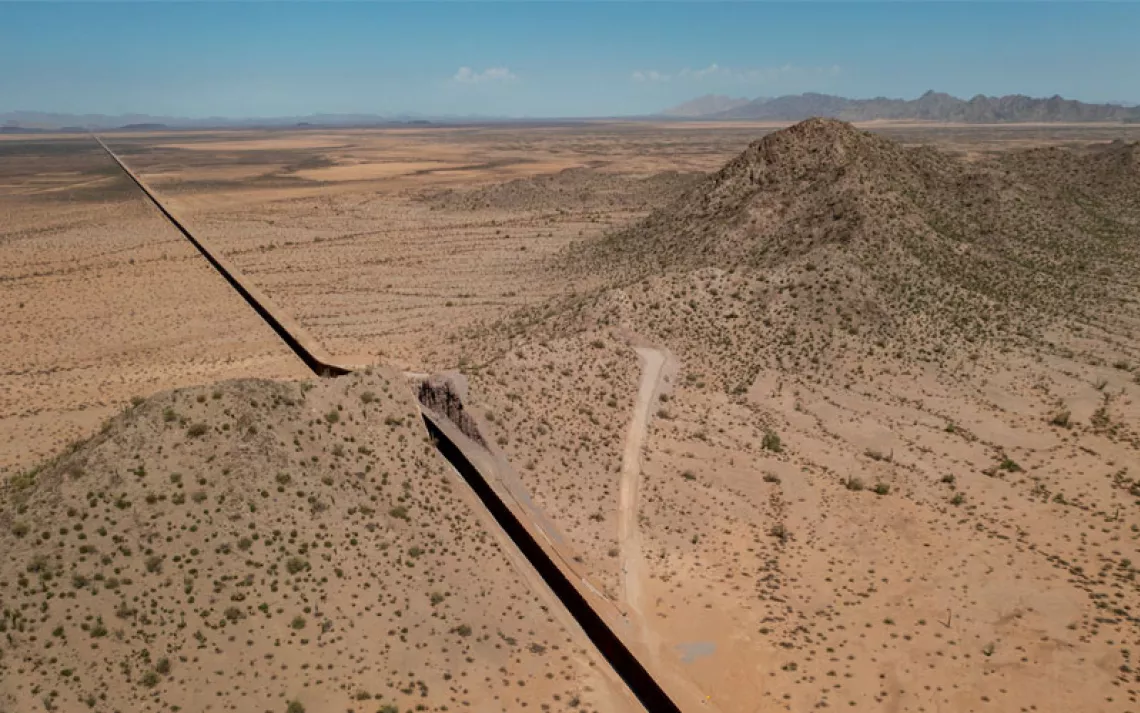Life, Death, and the Border Patrol
These hikers leave water for migrants in the Sonoran Desert
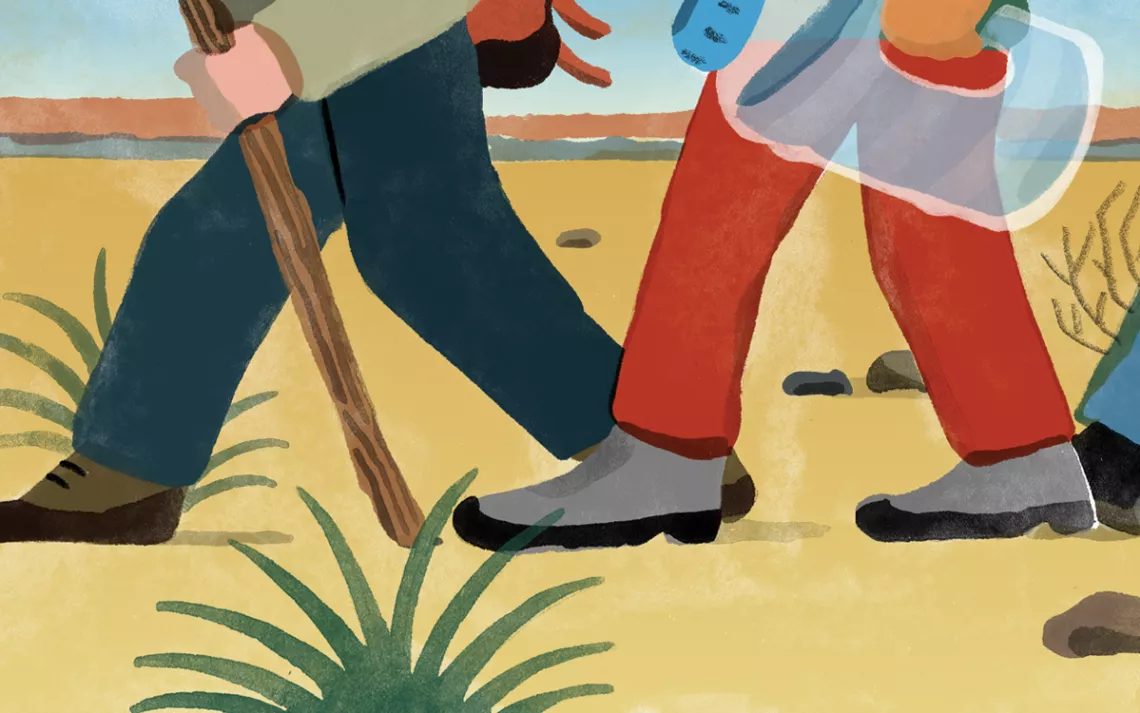
Illustration by Tallulah Fontaine
We've been hiking for a half hour when we see the SUV driving across the sand in our direction. We are not surprised that we've been seen. Our group of 12 hikers is the tallest thing around that isn't a cactus.
The SUV pulls up alongside us. "What are you doing?" says the Border Patrol officer inside.
"Hi, sir," says one of the volunteers leading us. "We're just a group of friends on a day hike."
"What's with the water jugs?" says the officer. Each of us is carrying a gallon of water. Some are carrying two. "You wouldn't be doing anything special with those, would you?"
"It's 97 degrees, sir," says our group leader.
The officer smiles, but it's not friendly. He doesn't believe us. But we're on public land. There's not much he can do, for now.
He asks to see our identification. We open our packs and begin digging. Before we can pull out our IDs, he abruptly speeds away, kicking up a plume of dust that leaves us all coughing. "Hope you guys have a nice day," he shouts sarcastically.
We start walking again, slipping in the soft sand.
When I met up with the Border Angels this morning, we separated into groups according to hiking ability. I joined the most experienced group. I recently spent a month hiking the Camino de Santiago across Spain. But walking with no trail is brutal. A few hikers have already turned back.
Border Angels is a nonprofit, run by volunteers, that has provided legal aid and education to immigrants in San Diego since the 1980s. For the past two decades, it has also left caches of water in the Sonoran Desert for migrants crossing it. Last year, at least 283 people died trying to cross the borderlands between the United States and Mexico, mostly from dehydration. The actual number of deaths could be higher—not all bodies are discovered or reported to the Border Patrol.
We reach a wall that is more like a pile of boulders and begin to scramble up. More hikers turn back. Many first-timers don't ever return, one of the guides tells me. The ones who don't quit aren't necessarily the most athletic but have the strongest belief in what they're doing. I wasn't expecting this to be like the Camino, but it feels like a pilgrimage. Everyone wants to tell you why they're here.
Soon, we're inside a canyon. Signs of human activity are everywhere—empty water jugs, a shelter made of a tarp stretched across two boulders. It's difficult to say how recently people have been here. The sound of distant gunshots ricochets off the walls. BLM land is a popular spot for day-trippers to drink and shoot guns, but the sound makes everyone tense. We boulder our way through, leaving water jugs and bags filled with food, clothing, and emergency supplies as we go.
If the Border Patrol find these supplies after we leave, they might destroy them. But migrants and asylum seekers try to cross over on terrain where the Border Patrol can't drive. It's likely they'll find these supplies, at a time when the food and water could mean the difference between life and death.
As people set down their jugs, some write messages on them. I think for a minute and then write "Bienvenidos."
We reach the top of the canyon. In the distance, I can see the watchtowers and the white surveillance blimps flown by the Border Patrol. I can see the campers who are shooting guns and the distant glitter of the Salton Sea. I can see a smudge in the distance that must be a city in Baja California. There is no fence at this point, which sits at the junction between the United States and Mexico. It's impossible to tell where one ends and the other begins.
This article appeared in the November/December 2019 edition with the headline "Pilgrimage."
 The Magazine of The Sierra Club
The Magazine of The Sierra Club
